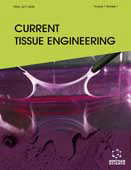Abstract
The goal of the field of tissue engineering has always been to provide constructs that can repair, replace, or aid in the healing of damaged organs and tissues. In order to do this successfully however, a close understanding of the tissue to be replaced is required, from the molecular to the systemic level. In recent years, it has been understood that the physiological environment of many tissues is modulated and maintained by a plethora of subtle mechanical, chemical, and electrical cues, all working in synch. Bioreactors serve the purpose of mimicking this physiological environment at the bench top, in an effort to precondition tissue constructs to develop better differentiation, integration and mechanical compatibility to avoid complications post transplant. However, exactly mimicking every single subtle cue that takes a part in the development of certain tissues is currently beyond our reach, as there is still a lack of understanding of said cues and interactions. Despite this, the advances in the design of bioreactors have been tremendous, from the first simple incubator to bioreactors that now incorporate a vast amount of forces and stimulation to different tissues. This review paper takes a look at the advances and development of bioreactors in the past five to ten years, as well as assesses those currently being used in the field and their efficacy in preconditioning functional tissue constructs.
Keywords: Bioreactors, in vitro model, regenerative medicine, stem cells, tissue engineering.
 24
24

